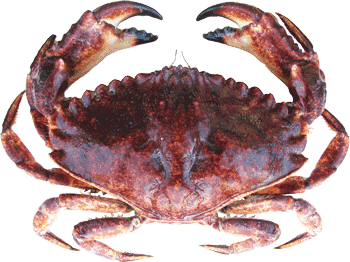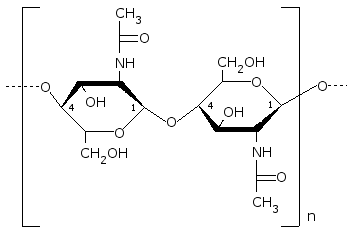Mating and Life Cycle
Mating
Red rock crabs are dioecious and reproduce
sexually. Mating occurs in summer when females are in the their soft shell
state of molting. Females release a pheromone in their urine in order to
attract males and stimulate their behavior. Males will often guard a female
who is preparing to molt, by holding her under his abdomen sometimes for
several weeks. He then guards her until her new exoskeleton grows in and is
hardened. Eggs are fertilized internally then extruded after 11 weeks.
Females may carry from 172,000 to 597,000 eggs on the pleopods of the
abdomen and looks like an orange spongy mass.
Growth through Molting
Larval development goes through 5 stages with one
megalopal stage. Average larval development time for red rock crabs to the
megalopal stage is about 100 days. The color of juveniles is often extremely
variable ranging from pure white to a variety of color patterns including
bands of brown and white or red and white stripes. Red rock
crabs grow to carapace widths of 20cm in males
and 16 cm in females. Life expectancy is about 8 years.
Growth of the red rock crab is achieved through a
process called molting where the crab sheds its old shell for a new one.
Young crabs may molt several times a year, but by the time they reach about
four inches in width, the frequency is reduced to about once a year. Females
usually molt in spring before the males so they can mate. Males usually molt
during summer and early fall, but this can vary.
All crustaceans have an exoskeleton containing
the polysaccharide chitin. The exoskeleton surrounds the outside of the crab
as well as some internal structures such as the gills. Parts of the
exoskeleton are calcified and ridged providing the crab a suit of armor with
hinged joints. The shell can not expand as the crab grows, so the crab must
periodically molt. Secretion of hormones starts the molt cycle. A new
cuticle forms, separates from the old cuticle, and some calcium is reclaimed
from the old shell. The crab quits feeding before and relies on energy
stored in the hepatopancreas. When the exoskeleton is shed, the crab backs
out of its old cuticle through a fracture below the carapace called the molt
line.
The crab at this time is extremely vulnerable to
attack and predation. Males with a mate will often guard the female until
their new exoskeleton is hardened. They hide buried in sand several days
until the shell begins to harden. The new soft wrinkled cuticle fills with
water and swells up to thirty percent. The crab then begins to feed to
restore its energy reserves, fill out its muscles, and completely harden its
shell, in a recovery process which may take up three months. It is during
this recovery period that we find soft crabs with poor quality meat.
To learn about their interactions with other
species click here!
To go back to the home page click here!
 Red Rock Crab
(Cancer productus)
Red Rock Crab
(Cancer productus)